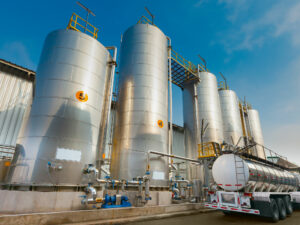- The limited supply in the EU and declining production in China are causing tryptophan prices to skyrocket worldwide.
- Lower supply and higher demand in China are pushing methionine prices higher, with stabilization expected in Q1 2024.
- The landmark agreements cement New South Wales and Tokyo’s commitment to clean energy and position both regions as trailblazers.
Hello Partners!
Welcome back to our Newsletter!
In this issue of our newsletter on additives, we shed light on the ever-changing dynamics of the global market. Against a backdrop of economic volatility and geopolitical tensions, we analyze the intricate interplay between supply, demand and pricing of key commodities. Join us as we decipher the latest trends, uncover market sentiments and navigate the complexities that will shape the future of these important industries.
Let’s take a look at what else is happening on the market!
Hottest Products of the Week!
Amino acids
Despite the weaker prices observed for Lysine since December 2023 and stable pricing for Threonine over the same period, escalating freight costs have significantly increased the total cost to global end users of both products. Uncertainties in global freight markets and challenges in supply chain logistics are contributing to price volatility, prompting market analysts to take a cautious view of future developments.
Methionine
The price of Methionine has risen recently due to a reduced supply of the raw material on the market. China’s recovering manufacturing sector, reflected in a rise in the Purchasing Managers‘ Index, also contributed to increased demand for Methionine ahead of the Lunar New Year, which weighed on inventories and pushed up prices globally. Despite a fluctuating trend in 2023, the current market analysis assumes stable Methionine prices in Q1 2024, supported by sustained demand and potential production declines.
Tryptophan (feed grade)
Tryptophan prices are rising sharply on the global market due to high demand and limited supply in the European Union. Declining production in China, a major exporter of the raw material, and logistical challenges are exacerbating this trend. In addition, optimistic consumption rates in the US and Germany indicate that demand for tryptophan will continue to rise, which could lead to further price increases.
Citric Acid
The increase in Citric Acid prices is mainly due to rising demand and limited availability of the raw material on the market. In addition, the weakening of the euro has contributed to higher prices for US and German Citric Acid exports internationally. Furthermore, delays in container deliveries from China have contributed to higher prices for all raw materials from this country. Further delays in deliveries and limited contact with Chinese producers are currently expected due to the Chinese New Year.
Vitamin C
Prices for Vitamin C remain high due to the imminent rise in transportation costs and increased demand. Rising transportation costs and logistical problems, including incidents on key trade routes, are exacerbating the situation. Rising demand for goods in various sectors further complicates the issue of availability. Analyzes indicate that the upward trend in Vitamin C prices will continue, which will increase purchasing pressure and push up raw material costs.
Monocalcium Phosphate
Exports of calcium monophosphate (MCP) increased in 2023, reaching around 48,200 tons in December and 478,700 tons for the year as a whole. Stable demand for MCP in North America and Latin America is helping to maintain the balance between supply and demand. The price outlook for MCP depends on production costs, the availability of raw materials and global trade and logistics conditions. Despite potential changes, MCP remains an important component of the animal feed industry, which could affect price stability.
What Else?
In a landmark move, New South Wales (NSW) and Tokyo have reaffirmed their commitment to sustainable development with the signing of two landmark Memoranda of Understanding (MoUs). These agreements, on the transition to a clean economy and hydrogen energy, represent a shared vision for a greener future. NSW Premier Chris Minns welcomed the MoUs as evidence of the enduring bilateral relationship, while Minister for Climate Change and Energy Penny Sharpe sees them as critical to positioning NSW as a key player in the global hydrogen landscape. These MOUs not only symbolize cooperation, but also lay the foundation for substantial collaboration that will put both regions at the forefront of the clean energy revolution.
Prices for alkylamines fell worldwide at the beginning of February, as the lower costs for ammonia, methanol and ethanol had an impact on the respective products. Inventories are still being reduced as suppliers are acting cautiously. In the USA, dimethylamine prices have stabilized amid inconsistent developments in the industry. In Asia, demand in the pharmaceutical and agrochemical sectors is subdued, while Europe is facing economic challenges. Prices in the USA are expected to rise moderately, while they will stabilize or fall in Asia and Europe due to destocking and economic factors.
In January 2024, optimistic sentiments prevailed in the US ethylene vinyl acetate (EVA) market, driven by increased demand from various downstream sectors such as packaging, footwear, solar energy, automotive and adhesives. With rising consumption rates and easing economic constraints, the EVA market has developed optimistically. Despite challenges in the solar panel industry due to tariff-related losses, the overall resilience of the US economy, particularly in the chemicals sector, including polymers and resins such as ethylene vinyl acetate, remains evident. Ethylene vinyl acetate prices are expected to continue to rise in the first quarter of 2024, driven by increased demand and improved economic conditions, despite possible delays in monetary policy adjustments and geopolitical tensions.







